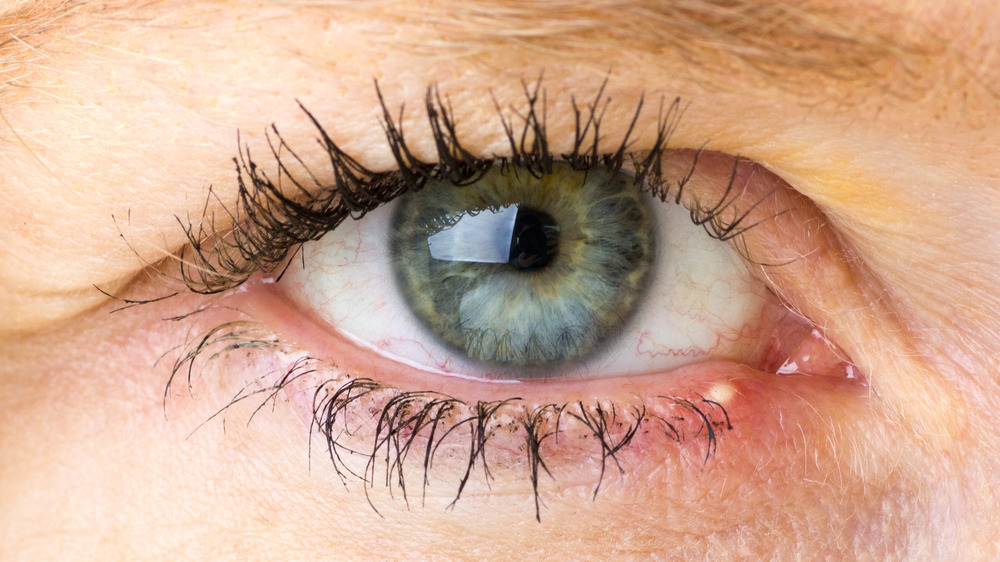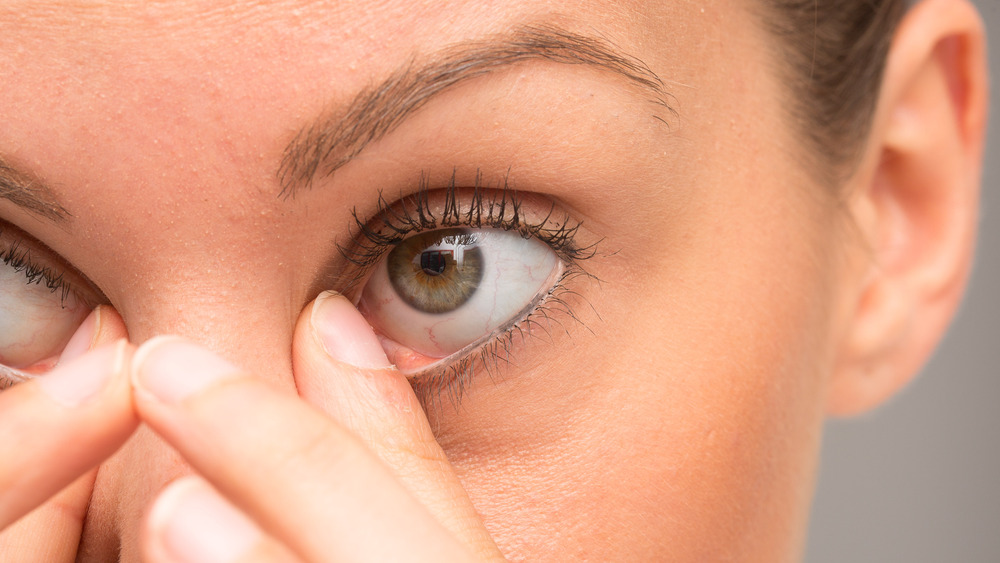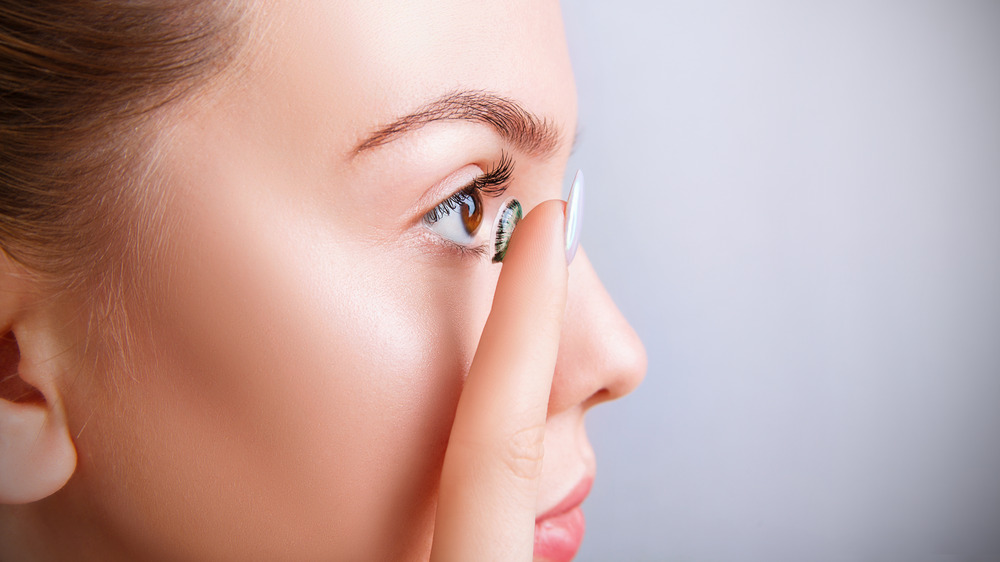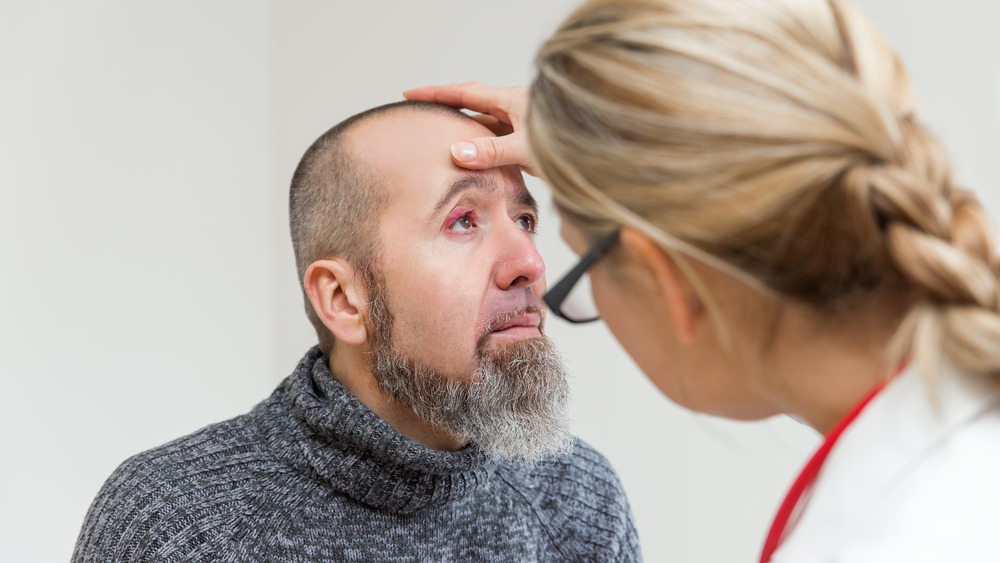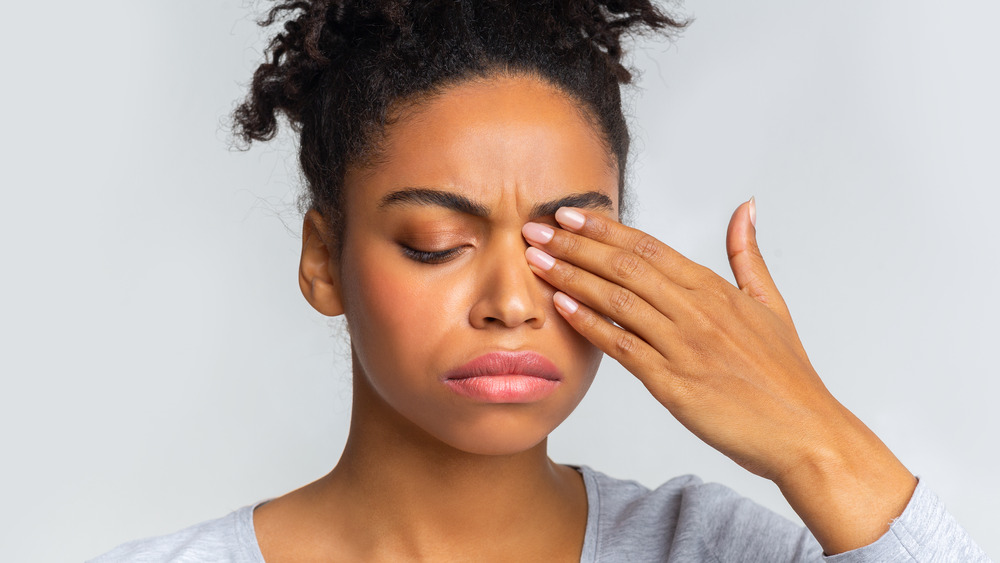Here's What's Really Causing Your Stye
Having a stye in the eye can be really annoying as the symptoms are uncomfortable. It may look like a pimple, but it's a lot more painful than regular acne, and no, you can't just pop it.
A stye is typically caused by Staphylococcus aureu, "one of the most common bacteria on the skin, eyelids, and eyelashes, and can clog the oil glands," according to Duke Ophthalmology. According to Samuel Pierce, an ophthalmologist and the former president of the American Optometric Association (AOA), dirty hands can cause a stye (via Health). Hands touch anything from handrails to doorknobs. In public locations, disinfection of surfaces does not always happen, and germs accumulate.
A stye can form anywhere in the eyelid, and it is possible to have more than one in each eye. The bacterial infection can last up to several days before going away. Maintaining proper hygiene is of the utmost importance during this time, and never ever squeeze that bump. It may be satisfying to get rid of the pus inside the stye, but it will only make the infection worse. If the stye is too painful or if your vision is affected, it is best to contact your doctor.
Eye makeup can cause a stye
Dermatologists and beauty gurus alike advise teens and adults to wash their faces every night before bed, and their reasons extend beyond preventing pimples. Cleaning the face every day is hygienic and can save you from, yes, acne but also styes. Sleeping with your eye makeup can also clog the eyelid, and when bacteria is trapped, it can form an infection (via Healthline).
If the eyeliner or mascara you wear is waterproof, know that it is best to use makeup removers that can fully remove the makeup on your eye area. Baby oil and coconut oil are great alternatives to makeup removers. If you dislike oily textures, there are a lot of oil-free makeup removers on the market today. Make sure to read the label as there are products intended for waterproof makeup. Holding a piece of cotton drenched in makeup remover over the eye for a few seconds can soften the makeup for easy removal.
Improperly cleaned contact lenses can lead to a stye
Eye experts often tell patients to regularly clean contact lenses with recommended solutions, and it is not only to lubricate the contacts. Cleaning contact lenses before and after use can remove "eye-produced buildup," makeup, and other debris (via All About Vision). If not cleaned properly, the lenses can cause discomfort or even styes, according to Duke Ophthalmology. And bacterial infection around the eyelid can make placing and removing contact lenses painful and difficult. Experts suggest rinsing each lens with a few drops of solution, then gently rubbing the lens. Wash again to get rid of loosened buildup.
Cleaning the lens case is also very important. You wouldn't want to reuse the same solution for days. Washing the inner part of the case and filling it up with a new solution can eliminate harmful microorganisms. Just like the hands and surfaces, disinfection is essential. Touching your lenses with dirty hands is a big no-no. Additionally, Dr. Tina Singh told Duke Ophthalmology, "We don't recommend sleeping with contacts as well because bacteria love moist, dark environments." Last but definitely not least, never use expired contacts. The expiration date is there for a reason!
Some people are more prone to styes
People with diabetes are susceptible to infections, including styes, as they have fewer white blood cells (via Express). These cells, or leukocytes, are responsible for fighting bacterial infections. Additionally, diabetic patients have high blood sugar levels, which damages blood vessels around the body, especially in the eyes. Doctors may recommend using a topical antibiotic to aid the healing of a stye. Applying a warm compress on the stye can also alleviate pain and discomfort. And again, always practice good hygiene. Don't forget to wash your hands and use clean towels — never reuse or share them.
"Styes aren't directly contagious, just as acne pimples are similarly not contagious. It's a phenomenon of local inflammation and irritation that can't be spread to others through casual contact," Dr. Debra Rose Wilson, a health psychologist and nurse, told Healthline. "But the large number of bacteria in pus can cause other skin breakouts."
This is how you should care for a stye
There are a few ways to care for a stye. A warm compress is but one, and you can repeat the process several times a day for up to 10 minutes each time, according to the American Academy of Ophthalmology (AAO). This may, in fact, be one of the best ways to get rid of a stye. "Adding heat can get the oil glands to unclog and get them to release their oils naturally," Dr. Amy Lin from the University of Utah Health told Duke Ophthalmology. And as per Healthline, "Massaging the stye during or after the warm compress helps break up the material in the stye so it can drain better." But remember to always wash your hands before touching your face, especially the infected area.
To remove draining and crusting around the eyelid, you can use a cotton swab with baby shampoo or any mild soap mixed with water. Using a cotton bud is gentler than using the hands and much cleaner too. If the stye persists, consult an ophthalmologist. They can prescribe a special kind of medication, or they can drain the stye.
